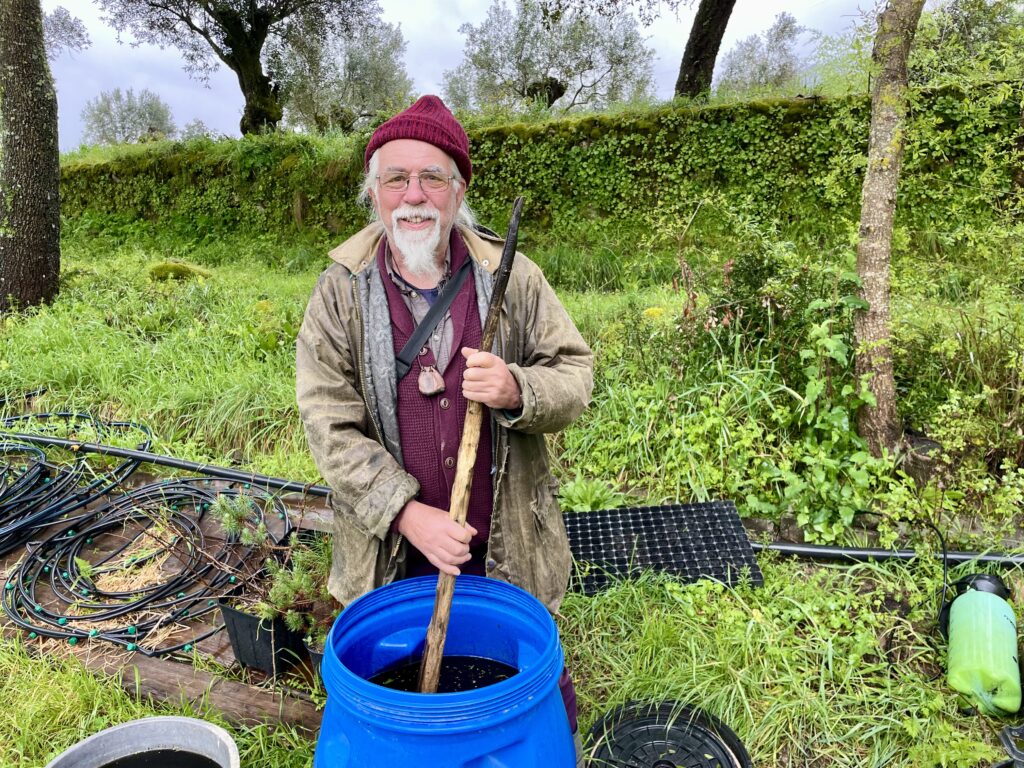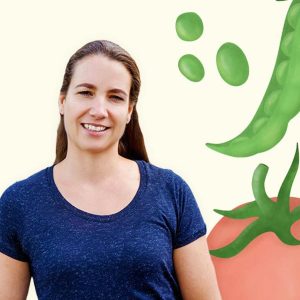Vortexing the 13 moons potion at Vale dos Lobas. Uuuh what?!

Of all the inspiring examples I’ve presented to you over the past while, this one perhaps demands the most open-mindedness. Allow me to introduce you to the ’13 moons potion’.
(Please note that this text is translated by Open AI as I write my all my peas in Dutch)
This week, I’m working at Vale das Lobas, a 60-hectare project where peasmaker Tony Conway reconnects humans and nature in various ways. But more on that later. Because earlier this week, while helping out in the vegetable garden, I came across this vat of blackened water. They asked me to vortex it, stirring it into a whirlpool counterclockwise. Uh, what?!
The concoction I’m stirring is the 13 moons potion, a kind of compost tea. And it’s captured my attention. What exactly is this, and could it be a method that will help us in future food production?
At the core of healthy plants and regenerative agriculture lies a healthy soil. To make soil healthier, you can do all sorts of things: stop plowing or only till the top layer, add compost, use cover crops, rotate crops, etc. Adding a compost tea like the 13 moons potion is also a method.
I’m particularly intrigued by how the 13 moons potion is made. It’s quite different from what I’ve seen on my journey so far. Here, spirituality, the ‘intangible’, and food production come together. And describing the production process briefly doesn’t do it justice, but I’ll give it a shot.
The Vale das Lobas team ventures out into the surrounding area on the day of the new moon. They first connect with themselves and observe which plants ‘call out’ to them. These plants are then picked, either in full or in part. The collected plants are placed in a bucket of river water. The mixture is then vortexed. The goal is for the plants to release their active ingredients into the water, and the vortex stimulates this.
The water is vortexed again every day. After two weeks, it’s the full moon, and the whole group repeats the vortexing process together. This happens during the daytime, by the way. This process is carried out for a year, until there have been 13 moons, and everything is stored in one vat.
The result is a kind of power-water with a base of 300-400 plants that can be dripped onto crops in the soil like a medicine. It contains microorganisms from the hundreds of plants in it. And just as a rich microbiome in your own gut is very healthy, the same goes for the soil.
As Tony explains the reasoning behind the steps of the production process, I can follow along quite well. Yes, the moon plays a significant role in nature. And conscious attention, energy, and vibration may play a much bigger role than we can currently grasp. But there’s still so much intangible about this story that my rational brain is resisting a bit.
However, Vale das Lobas is convinced of the power of this method; Tony has been experimenting with it for years. That’s why the New Lisbon University will soon investigate its effectiveness.
And despite the resistance from my rational brain, I think: the challenges we’re facing in our food system right now are enormous. We have to seize every opportunity. So, even methods like this one deserve a fair chance. What do you think?
Ik ben Chantal en reis door het land in mijn camper searching for peas. Ik maak verhalen vol inspiratie over peasmakers; voedselveranderaars die werken met hun hart en zo de wereld veranderen. Ik ga aan de slag bij ze voor een dag of week. Zo leer ik hun missie beter kennen en kom ik erachter wat hen drijft als persoon. In de tussentijd probeer ik te ontdekken wat het voor mij betekent om een goed leven te leven. Mijn ervaringen deel ik met jullie.
